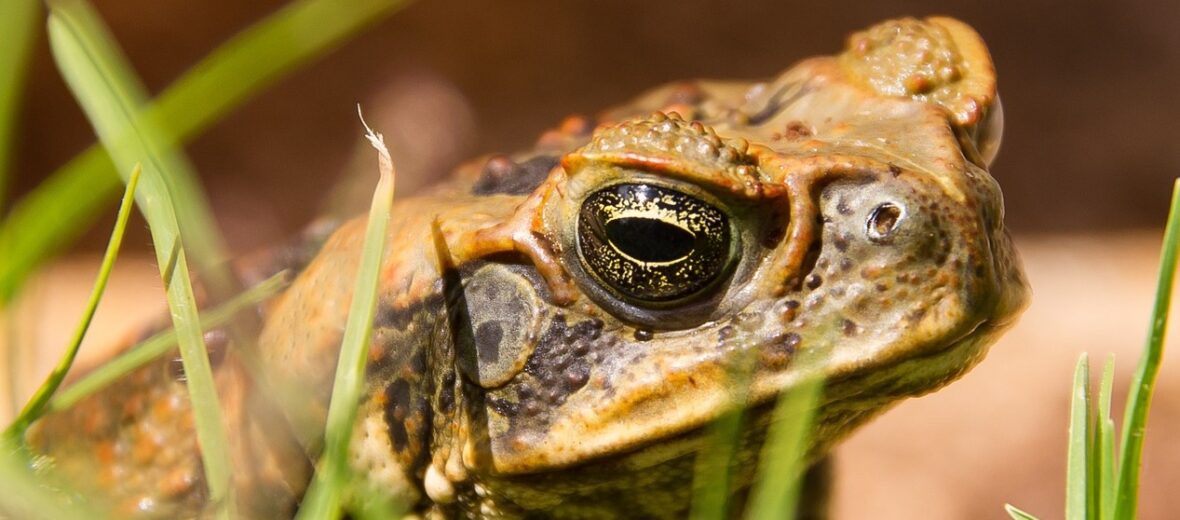
In an effort to control the cane beetle infestations, Australians decided to bring in the cane toad. Instead of eating cane beetles and grubs, these toads ate everything but… Talk about your all time backfires! This toxic toad is now a highly invasive species that has wreaked havoc on Australian wildlife! They are very poisonous, they eat anything that they can get in their mouths, and they have no known natural predators; sans humans.
First the Stats…
Scientific name: Rhinella marina
Weight: Up to 2.8 lbs.
Length: Up to 9 inches
Lifespan: Up to 30 years
Now on to the Facts!
1.) The cane toad is nocturnal (active at night) and terrestrial (spends most or all of their life on the ground).
2.) Cane toads will also take dog and cat food from bowls placed outside of the house. These ravenous creatures will also eat bees directly from the beehive.
3.) They have one heck of an appetite! Cane toads will eat insects, lizards, snails, frogs, toads, small snakes, mice, rats, and even birds. They will also cannibalize each other.
4.) Like all amphibians, they do not drink water. Instead, they absorb water directly through their skin.
5.) These toads produce a strong poison called “bufotoxin” which interrupts normal heart functioning. The toxin is produced in the parotid glands near the shoulders, right behind the eyes.
But wait, there’s more on the cane toad!
6.) This toxin is a mixture of 14 different compounds! Cane toads are typically the last meal any predator eats. Animals usually die up to 15 minutes after the swallowing of a cane toad.
7.) Bufotoxin causes pain in humans, when ingested, but rarely ends up in a fatality. However, blindness occurs if the toxin comes into contact with your eyes.
Did you know…?
A group of cane toads is called a knot.
8.) Like so many other toads, mating takes place during the rainy season.
9.) Eggs, tadpoles, and adults are poisonous. Only the toadlets are toxin free.
10.) Females deposit 20,000 – 30,000 eggs arranged into long gelatinous strings onto aquatic vegetation!
But wait, there’s still more on the cane toad!
11.) The eggs hatch in just 2 – 3 days and the tadpoles metamorphose in just 4 – 8 weeks.
12.) Only the saw-shelled turtle, keelback snake, and Torresian crow are known to be able to eat cane toads.
Now a Short Cane Toad Video!
Also, check out the Critter Science YouTube channel. Videos added frequently!
Want to suggest a critter for me to write about? Let me know here.
Learn more about all kinds of cool critters, right here!
Some source material acquired from: Wikipedia & IUCN



